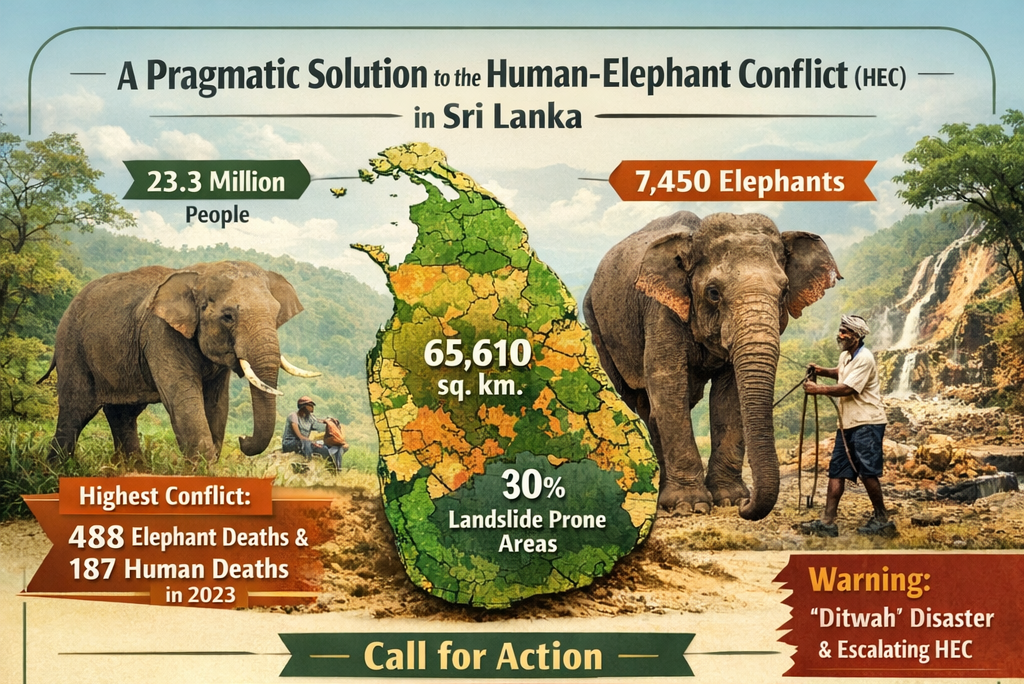Microplastics have been found in plaques that accumulate in coronary arteries. – By Dr Harold Gunatillake

Image Source : fos.cmb.ac.lk
According to the U.S. National Oceanic and Atmospheric Administration and the European Chemicals Agency, microplastics are fragments of any plastic less than 5 mm in length. They pollute natural ecosystems by entering them from various sources, including cosmetics…
Overview:
This document concerns the presence of microplastics, potential health risks to humans and the environment, and strategies to reduce plastic pollution.
Individuals with microplastics and nanoplastics present in plaque lining a significant blood vessel in the neck may face an increased risk of heart attack, stroke, or mortality, according to recent research findings
Nanoplastics pose a greater risk than microplastics because they can penetrate biological membranes.
Living in developed nations today entails health risks associated with unhealthy diets. The habitual intake of hot foods, street foods, and highly salted, processed, fatty, fried foods can result in arterial clogging, thereby increasing the risk of cardiovascular diseases and strokes. Historically, our parents prepared meals using clay pots, boiling food in water in these utensils and then seasoning it for flavour, which was considered one of the healthiest cooking methods. However, in today’s fast-food culture, many foods are fried in cooking oil for convenience and taste, which is detrimental to health and contributes to various health issues.
This contemporary way of living has resulted in a variety of health concerns, including obesity, cardiovascular diseases, diabetes, and cancer, among others.
Image Source : prhe.ucsf.edu
Another new health hazard.
Regrettably, we now encounter an additional health threat stemming from the use of polythene bags for food wrapping, replacing traditional paper bags as was customary in the past. Microplastics, defined as plastic fragments less than 5 millimetres in size, contaminate natural ecosystems through various pathways, including cosmetics, textiles, food packaging, and industrial activities. Supermarkets frequently utilise polythene bags for food packaging, thereby contributing to this form of pollution.
Microplastics are particles smaller than 5 millimetres, whereas nanoplastics are even tinier and require specialised microscopes for detection. Over time, these particles have become pervasive, and their presence is now undeniable. They have been identified in pristine Antarctic snowfall, at the depths of the Marianas Trench, as well as in human blood, breast milk, urine, and tissues of the placenta, lungs, and liver. Since 1980, global plastic production has been estimated at 8.3 billion metric tonnes (MT), of which more than half has been discarded after a single use.
The National Oceanic and Atmospheric Administration, together with the European Chemicals Agency, has concluded that microplastics have detrimental environmental effects. Water represents one of the primary sources of microplastics. An individual consuming exclusively bottled water may ingest approximately 130,000 microplastic fragments annually from this source alone. Furthermore, microplastics did not exhibit phytotoxic effects on wheat, as evidenced by a 19% stimulation of the antioxidant system, a 2% reduction in morphological features, and a 4% inhibition of photosynthesis.
Certain animals confuse microplastic particles with food, whereas others ingest them incidentally when consuming prey that have ingested these particles. Consequently, the question arises: Are these microplastics detrimental to other animals and humans?
Substantial quantities of microplastics contaminate the ocean, freshwater bodies, and terrestrial environments. Research indicates that animals, including humans, inadvertently consume these microplastics. (sciencelearn.org.nz)
David Nield, a journalist, reports on health issues on 5 March 2024, indicating that minute fragments of microplastics are infiltrating our bodies in alarming quantities, primarily via our food and beverages.
There is a surprisingly simple method to remove microplastics from drinking water. Researchers have discovered a practical, straightforward approach to extract them from water. A team from Guangzhou Medical University and Jinan University in China conducted tests using both soft and hard tap water (which is richer in minerals), introduced nanoplastics and microplastics (NMPs), then boiled the mixture and filtered out residual particles.
Microplastics are minuscule plastic particles that can contaminate the environment and be ingested or inhaled by humans. A recent study found that nearly 60% of individuals undergoing surgery had microplastics or smaller nanoplastics in a primary artery. Patients with detectable particles were observed to be 4.5 times more likely to encounter adverse cardiovascular events, such as heart attacks, strokes, or mortality, within approximately 34 months following the procedure, compared to individuals with arteries free of plastic contaminants. Raffaele Marfella, a cardiology researcher at the University of Campania Luigi Vanvitelli in Naples, Italy, led a new study to identify new risk factors for cardiovascular disease. The study was initiated due to the increasing amount of degraded plastic pollution in the environment. Dr Marfella and his colleagues wondered whether micro- or nanoplastics could harm our arteries. These tiny plastic particles can enter the body through ingestion, inhalation, or skin contact.
Although the study remains inconclusive, it underscores concerns regarding the potential influence of microplastics on cardiovascular health and the accumulation of plaques within blood vessels. The following are general strategies that may help promote cardiovascular well-being and potentially mitigate the risk of plaque formation in the vasculature.
It is imperative to recognise that implementing specific lifestyle modifications can substantially influence our overall health.
Although ongoing research continues to explore the potential adverse effects of microplastics, it remains advisable to adopt heart-healthy routines to enhance cardiovascular health and potentially reduce the risk of plaque-related complications.
Microplastics originate from various sources, both directly and indirectly. Let us analyse some of these sources in greater detail.
“Plastic pellets, also referred to as pre-production pellets or nurdles, are diminutive granules of plastic utilised in the manufacture of diverse plastic products. These pellets are resistant to degradation and can readily contaminate the environment, posing a significant threat to marine life and human health. Due to their small size, they are susceptible to ingestion by fish and avian species, which can disrupt the food chain and adversely affect the well-being of both animals and humans.”
Personal Care Products: Certain items, including exfoliating scrubs and toothpaste, incorporate minute plastic microbeads. These beads can be flushed down drains and ultimately enter aquatic ecosystems.
Paint: Paint particles can release microplastics through weathering and erosion.
Washing Wastewater: Synthetic textiles shed microfibers during laundering, thereby contributing to microplastic contamination.
Sewage Sludge: Microplastics from diverse origins can accumulate within sewage treatment facilities.
Plastic running tracks and artificial turf are susceptible to degradation over time, potentially leading to the release of microplastics. Rubber road surfaces generate rubber particles through tyre wear, thereby contributing to microplastic pollution. As global vehicle numbers increase, tyre wear emerges as a significant source of environmental microplastics. Municipal debris, such as plastic bags and bottles, disintegrate into smaller particles over time. Discarded fishing gear, including nets and lines, can fragment into microplastics. Agricultural plastics, such as mulch films, decompose into minute fragments, while larger plastic items naturally break down into microplastics under environmental conditions. Among these sources, the escalation of vehicle tyre wear is particularly alarming; however, research into the prevalence of rubber particles in the environment remains limited. Proper management of plastic waste and wastewater is crucial in preventing and controlling microplastic pollution in the future.
Addressing microplastic contamination necessitates collective efforts to protect our environment and health, encompassing individual choices and policy reforms. Reducing plastic pollution is essential for safeguarding the health of our planet. The following are some practical measures we can adopt:
Discontinue the Use Of Disposable Plastics:
Were you aware that approximately 90% of daily plastic items are single-use and subsequently discarded? These comprise grocery bags, plastic wraps, disposable cutlery, straws, and coffee cup lids. Nonetheless, each individual can contribute to minimising plastic waste by opting for reusable alternatives. Consider bringing your own bags during shopping, carrying your silverware to the workplace, and utilising a travel mug for your coffee. Such small measures can significantly impact the development of a more sustainable future.
Cease Purchasing Bottled Water: Approximately 20 billion plastic bottles are discarded each year. To avoid single-use plastic bottles, it is advisable to carry a reusable water container. Should you have concerns regarding the quality of tap water, consider selecting a bottle equipped with an integrated filter.
Below are several recommendations to diminish plastic consumption and contribute to environmental conservation:
Microbeads are minuscule plastic particles frequently used in facial scrubs, toothpaste, and body washes. Nevertheless, these small particles can easily bypass water treatment facilities, harming marine life. It is advisable to avoid products containing microbeads and instead choose natural exfoliants such as oatmeal or salt. Boycotting microbeads is an effective strategy to safeguard our planet and its inhabitants.
- Cook More Frequently: Preparing home-cooked meals decreases dependence on takeout containers and plastic doggy When ordering food or dining out, refuse plastic cutlery. For additional benefit, bring personal food-storage containers for leftovers.
- Purchase Secondhand Items: Acquiring pre-owned goods reduces the demand for new plastic packaging. Explore thrift stores or online platforms for toys, gadgets, and other items.
- Enhance Plastic Product Design: Improvements can be made in the design of plastic items, including utilising more environmentally friendly materials or developing better recycling systems. Promote reusable and refillable options by redesigning plastic products to facilitate reuse and refilling.
Increasing solid waste collection is vital to ensure effective waste management and to prevent plastic pollution from negatively impacting communities. Additionally, we should advocate for reduced use of single-use plastic products and for diminished pollution from plastic manufacturing facilities. It is important to remember that every small action matters. Through collective conscious efforts, we can considerably lessen plastic pollution and safeguard our environment.
The issue of microplastic contamination has not yet received adequate attention. Nevertheless, addressing this problem proactively before it escalates into an uncontrollable issue is
imperative. Such pollution can detrimentally impact our environment and personal health, particularly cardiovascular well- being. Consequently, taking preventative measures to curb this threat is of utmost importance.”
Image Source : news.mongabay.com
Beaches along Sri Lanka’s southern coast, a popular tourist destination, are increasingly being contaminated with microplastic pollution, a survey has found.






















